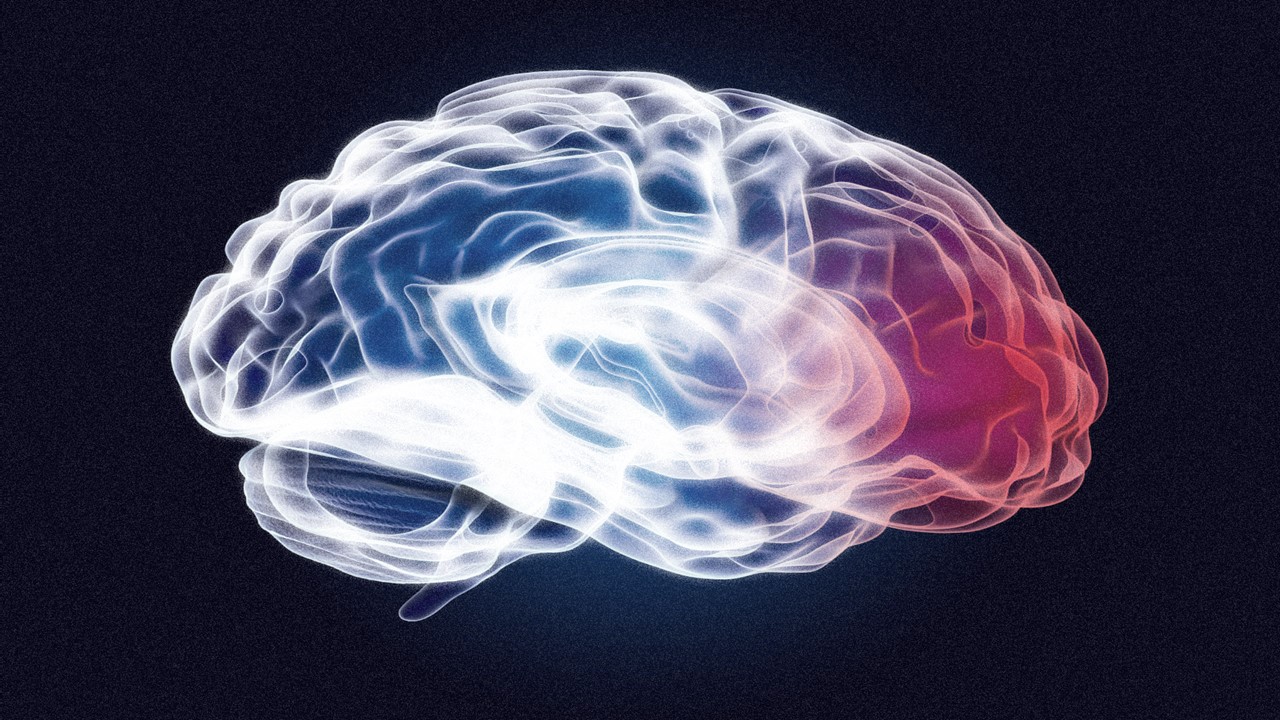Introduction: The Unseen Symphony of Gene Expression
The brain, with its intricate web of neurons and circuits, relies on dynamic gene expression to orchestrate everything from memory formation to disease progression. Monitoring this cellular dialogue in real time is crucial for advancing our understanding of neurological functions and developing effective therapies. Yet, traditional methods, reliant on invasive tissue sampling or imaging, often fall short of capturing the full spectrum of brain activity.
In this context, a transformative approach called Recovery of Markers through Insonation (REMIS) emerges. REMIS represents a novel, noninvasive strategy to monitor gene expression in specific brain regions with spatial and temporal precision. By combining focused ultrasound and engineered protein markers, this technique unlocks new possibilities for understanding the brain’s molecular orchestra without disrupting the symphony.
Neural Dynamic Gene Expression: The Brain’s Ever-Shifting Code
At the core of the brain’s adaptability lies the phenomenon of dynamic gene expression, a process where neurons fine-tune their molecular machinery in response to environmental and internal signals. This intricate system governs the production of proteins and signaling molecules, enabling neurons to adapt their structure and function to meet the demands of ever-changing conditions. For example, the activation of immediate early genes such as c-Fos and Arc can rapidly initiate molecular cascades critical for processes like memory formation, synaptic plasticity, and the response to stress. Unlike static cellular frameworks, these gene expression patterns evolve moment by moment, reflecting the brain’s incredible capacity for plasticity and adaptation.
Dynamic gene expression also plays a pivotal role in the maintenance of neural health and function. In neurodegenerative diseases like Alzheimer’s, Parkinson’s, and Huntington’s, disruptions in this tightly regulated process can lead to the production of toxic proteins or the failure to repair damaged neural circuits. Similarly, during a stroke or brain injury, the immediate activation or suppression of certain genes can determine the extent of recovery or further degeneration. These transient changes often occur in highly localized areas of the brain, underscoring the need to monitor gene expression with spatial specificity to fully understand the underlying mechanisms.
Beyond its relevance to disease, dynamic gene expression is fundamental to the natural rhythms of neural activity. For example, during sleep, the expression of genes related to synaptic maintenance and repair is heightened, while periods of wakefulness are associated with the activation of genes involved in learning and sensory processing. Even behavioral shifts, such as the transition from stress to relaxation, can alter gene expression profiles in specific brain regions, such as the hypothalamus or amygdala. Studying these patterns offers a window into how the brain manages its resources, maintains its networks, and preserves its resilience. This complex interplay of temporal and spatial gene expression highlights the brain’s remarkable ability to adapt and respond to its environment.
Breaking Barriers: How REMIS Redefines Noninvasive Brain Monitoring
Monitoring gene expression in the brain typically requires invasive methods such as biopsies or postmortem analysis. While advanced imaging techniques like MRI or PET provide a noninvasive alternative, they often lack the sensitivity and specificity needed to detect the nuanced molecular changes driving brain function.
REMIS circumvents these limitations by employing synthetic protein markers that can cross the blood-brain barrier (BBB) upon focused ultrasound application. These markers, engineered to be secreted from neurons, diffuse into the bloodstream where they can be easily detected through routine biochemical assays. The spatial precision of focused ultrasound ensures that only markers from targeted brain regions are released, allowing unparalleled insight into localized gene activity.
The REMIS Workflow: A Technological Marvel
At the heart of REMIS is a meticulously orchestrated workflow. First, synthetic markers such as Gaussia luciferase (GLuc) are delivered to the brain using a viral vector. These markers are designed to be secreted into the brain’s interstitial space. Focused ultrasound is then applied to open the BBB at specific regions, enabling the markers to escape into the bloodstream.
This process is both precise and efficient. Ultrasound parameters can be fine-tuned to achieve millimeter-level targeting, minimizing unintended effects on neighboring tissues. Once in the blood, markers like GLuc can be detected using sensitive techniques such as bioluminescence assays, providing a real-time readout of gene activity in the targeted brain region.
Gene Delivery Meets Ultrasound Precision
A major hurdle in brain research has been achieving precise gene delivery and expression monitoring. Traditional methods often rely on invasive techniques or broad systemic delivery, which lack spatial specificity. REMIS resolves this issue by leveraging adeno-associated viruses (AAVs) that target the central nervous system.
For proof of concept, researchers used an AAV vector to deliver GLuc under a neuron-specific promoter throughout the mouse brain. When focused ultrasound was applied to regions such as the striatum or hippocampus, GLuc levels in the blood spiked, confirming successful gene expression and marker release. This precise targeting is critical for studying localized brain functions, such as memory circuits or disease-specific pathways.
Spatial Precision and Cell Type Specificity
One of REMIS’s defining features is its spatial precision. By focusing ultrasound on specific brain regions, researchers can isolate markers from discrete areas without contaminating signals from adjacent tissues. This capability was demonstrated in experiments targeting regions of the mouse brain with submillimeter accuracy.
Equally important is the system’s cell type specificity. By using a synapsin promoter, REMIS ensures that markers are expressed exclusively in neurons. Immunostaining confirmed that nearly all GLuc-positive cells were neuronal, underscoring the technique’s ability to disentangle complex cellular interactions within the brain.
Beyond Monitoring: Unlocking Neuronal Activity with REMIS
REMIS is not just a tool for passive monitoring; it can actively measure endogenous neuronal activity. In a groundbreaking experiment, researchers coupled REMIS with a genetic circuit responsive to the immediate early gene c-Fos, a marker of heightened neuronal activity. By activating neurons with chemogenetic tools, they observed a surge in GLuc levels in the blood, directly correlating with neuronal activation in targeted regions.
This application demonstrates REMIS’s potential for studying dynamic brain processes. From mapping neuronal circuits involved in learning and memory to evaluating therapeutic interventions, the possibilities are vast.
Overcoming Challenges: Sensitivity and Temporal Dynamics
While REMIS is a powerful tool, it is not without challenges. The sensitivity of the system hinges on the efficiency of marker secretion and release. Researchers addressed this by optimizing ultrasound parameters to balance marker recovery with minimal tissue disruption. Additionally, the temporal dynamics of marker release were carefully studied. Remarkably, markers continued to diffuse into the blood for up to two hours post-ultrasound, providing a broad window for data collection.
The short serum half-life of markers like GLuc further underscores the system’s ability to capture transient gene expression events. This temporal resolution is critical for studies requiring precise timing, such as tracking the immediate effects of neuronal activation or pharmacological interventions.
REMIS in Context: Advantages Over Existing Techniques
Compared to traditional methods, REMIS offers several distinct advantages:
Noninvasiveness: Preserving the Integrity of the Brain
Traditional methods of studying gene expression in the brain often involve invasive procedures like biopsies or postmortem histology. While these approaches provide direct access to the brain’s molecular landscape, they are inherently destructive, making repeated measurements over time impossible. Biopsies, for instance, disrupt the very regions they aim to study, introducing confounding variables that can skew results. Moreover, these procedures pose significant ethical and practical challenges, particularly when studying human subjects or delicate brain structures. REMIS, by contrast, represents a transformative shift in methodology. It achieves precise insights into gene expression without the need for tissue extraction or any surgical intervention. By leveraging focused ultrasound and engineered protein markers, REMIS can monitor specific regions of the brain in living subjects, preserving their integrity. This capability not only safeguards the brain from physical disruption but also enables longitudinal studies, allowing researchers to track dynamic molecular changes over time. The noninvasive nature of REMIS is especially valuable for translational research, where repeated measurements in the same subject are often essential for understanding disease progression or evaluating therapeutic efficacy.
Spatial Precision: Targeting Brain Regions with Millimeter Accuracy
The brain’s complexity lies not only in its interconnected networks but also in the highly specialized functions of its discrete regions. Traditional imaging techniques like MRI and PET provide a general overview of brain activity but often lack the resolution to pinpoint specific molecular changes within targeted areas. Optical imaging methods, though capable of finer resolution, are hindered by their limited penetration depth, especially in larger animals or regions obscured by the skull. REMIS overcomes these limitations by employing focused ultrasound, a technique that achieves millimeter-level spatial precision. This precision ensures that only the desired brain regions are insonated, allowing the release of protein markers from those specific sites into the bloodstream. In experiments targeting areas like the striatum and hippocampus, REMIS demonstrated its ability to isolate gene expression changes with remarkable accuracy. Unlike traditional methods that sample broad swathes of tissue, REMIS enables researchers to investigate the molecular activity of highly localized regions, even those embedded deep within the brain. This level of precision is particularly advantageous for studies of complex neurological processes, such as memory formation or localized neuropathologies, where understanding regional dynamics is crucial.
Biochemical Versatility: The Power of Blood-Based Detection
One of REMIS’s most compelling advantages lies in its reliance on biochemical assays for marker detection. Once synthetic protein markers are released into the bloodstream, they can be analyzed using a variety of established and highly sensitive techniques, such as bioluminescence assays or mass spectrometry. This versatility opens up a world of possibilities for researchers. Unlike imaging modalities that are often limited to detecting one or two signals at a time, biochemical methods can simultaneously measure multiple markers from a single blood sample. For example, in a study measuring neuronal activity, REMIS used markers like Gaussia luciferase to quantify gene expression changes with precision. The ability to multiplex these measurements is a game-changer for neuroscience, enabling researchers to explore the interplay of multiple molecular pathways in parallel. Furthermore, biochemical detection is not constrained by the physical barriers that limit imaging techniques. Markers originating from deep brain regions can be reliably quantified in the blood, bypassing issues like signal attenuation through tissue or skull. This versatility ensures that REMIS can be adapted for a wide range of applications, from studying synaptic activity to monitoring the effects of gene therapies, all through the simplicity of a blood test.
Adaptability: A System Built for Broad Applications
The adaptability of REMIS is another key feature that sets it apart. The platform is not limited to a specific type of gene delivery or experimental setup, making it suitable for a wide array of applications in neuroscience and beyond. At its core, REMIS is compatible with various viral vectors, such as adeno-associated viruses (AAVs), which are widely used for gene delivery to the central nervous system. These vectors can be engineered to express different protein markers, tailored to specific research questions or therapeutic goals. Additionally, REMIS’s integration with focused ultrasound offers a high degree of flexibility in targeting, allowing researchers to explore diverse brain regions with precision. The system is also scalable, meaning it can be applied to different species, from small animal models to larger organisms, paving the way for potential clinical applications in humans. Importantly, the platform is not confined to neuroscience. The underlying principles of REMIS could be adapted to study other parts of the central nervous system, such as the spinal cord, or even non-neural tissues where gene expression monitoring is critical. This adaptability ensures that REMIS remains a versatile and valuable tool as scientific needs evolve.
These attributes position REMIS as a transformative tool for both basic research and clinical applications.
Future Directions: Expanding the Frontiers of Brain Research
The potential of REMIS extends far beyond its current applications. By incorporating more sophisticated gene circuits, researchers could monitor complex physiological states or long-term changes in brain function. Advances in AAV design and ultrasound technology could further enhance spatial precision and efficiency, paving the way for studies in larger animal models and, ultimately, human subjects.
Multiplexed detection of markers could revolutionize our understanding of the brain’s molecular landscape, enabling simultaneous monitoring of multiple pathways. Such innovations could transform how we diagnose and treat neurological disorders, from Alzheimer’s disease to traumatic brain injuries.
A New Era of Brain Monitoring
REMIS represents a paradigm shift in neuroscience, combining cutting-edge technology with elegant simplicity. By bridging the gap between noninvasive monitoring and high-resolution molecular analysis, it offers a window into the brain’s inner workings without disturbing its delicate architecture.
As researchers continue to refine this approach, REMIS holds the promise of unlocking answers to some of neuroscience’s most pressing questions, ushering in a new era of discovery and innovation.
Study DOI: https://doi.org/10.1126/sciadv.adj7686
Engr. Dex Marco Tiu Guibelondo, B.Sc. Pharm, R.Ph., B.Sc. CpE
Editor-in-Chief, PharmaFEATURES

Subscribe
to get our
LATEST NEWS
Related Posts

Neuroscience & Neuropharmacology
Cannabinoids and Autism: Evaluating Their Role in Sleep and Behavior
In the quest to improve the lives of individuals with autism spectrum disorder, rigorous science remains our most vital tool—revealing not just what works, but what does not.

Neuroscience & Neuropharmacology
Two-Dimensional Neural Geometry: A Revolution in Understanding Human Working Memory
Working memory, a cornerstone of human cognition, has long been mischaracterized as a passive storage system.
Read More Articles
Myosin’s Molecular Toggle: How Dimerization of the Globular Tail Domain Controls the Motor Function of Myo5a
Myo5a exists in either an inhibited, triangulated rest or an extended, motile activation, each conformation dictated by the interplay between the GTD and its surroundings.
Designing Better Sugar Stoppers: Engineering Selective α-Glucosidase Inhibitors via Fragment-Based Dynamic Chemistry
One of the most pressing challenges in anti-diabetic therapy is reducing the unpleasant and often debilitating gastrointestinal side effects that accompany α-amylase inhibition.













